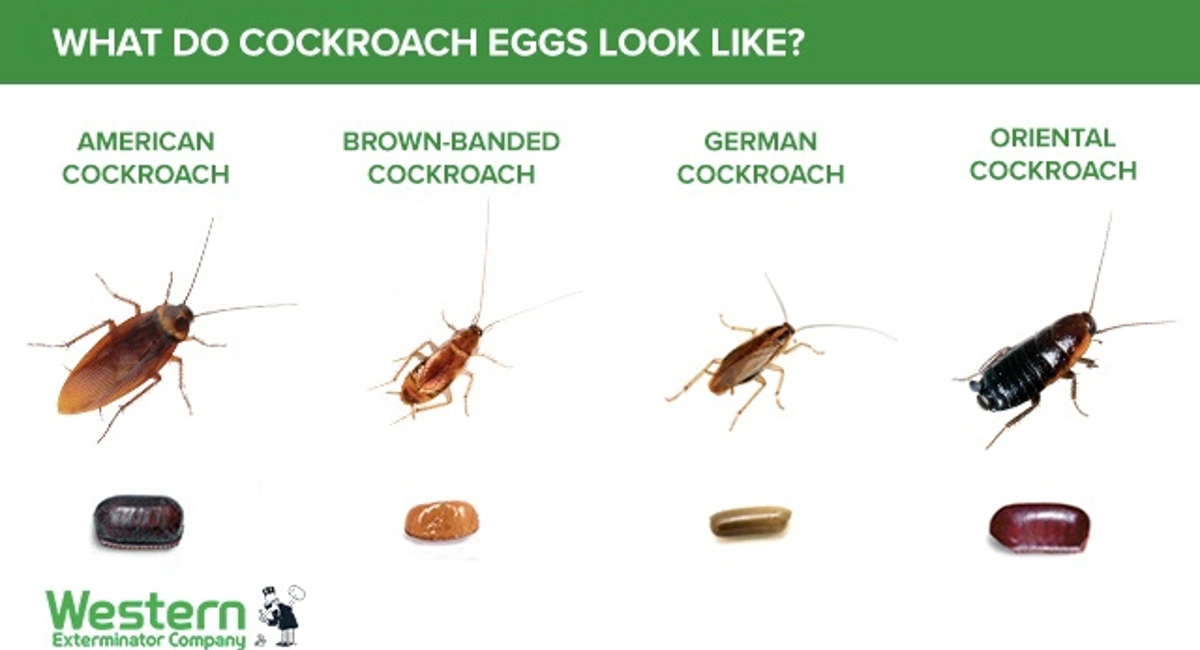For your Home
Login or register for the customer portal
Finding cockroach eggs around your home is not as common as finding the live roach itself. However, it’s important to know that if you do find cockroach eggs or an egg casing in your home, you should contact us immediately. Finding these eggs typically means you have an infestation.
If left untreated, one cockroach can lead to hundreds. Depending on the species, a single female cockroach can produce anywhere from 13 to 40 eggs in each egg case, and that’s an infestation you definitely don’t want to have to deal with on your own. Let’s take a look at how cockroaches start out and what you should do if you find roach eggs in your house.
Cockroaches develop in three stages: egg, nymph, and adult. Each cockroach species has its own physiological and biological way of reproducing, which means each species' eggs look different.
Roaches produce an egg sac called an ootheca. An ootheca contains many eggs and is encased with a protein substance that will harden into a sturdy, protective casing. This casing is typically shaped like an inflated, curved bean capsule and is usually anywhere from red to dark brown and sometimes even black in color. Some ootheca have ridges on them, while others are smooth.

Cockroach eggs and their ootheca can vary depending on the species. Below we break down the most common types of cockroaches to invade a home and what their oothecae look like and contain.
American cockroaches are widely distributed around the world and mainly live in tropical and subtropical areas. Female American cockroaches only need to mate once to produce multiple oothecae because females can store sperm. Their egg capsules are roughly ⅓” long and are dark reddish or blackish brown in color. Each ootheca holds about 16 eggs.
Brown-banded cockroaches gravitate toward warmer areas, typically 80℉+. Female brown-banded cockroaches carry matured ootheca cases for 24 to 36 hours and tend to place egg cases close to one another. Their tan egg casings are small, measuring less than ¼” in length and contain about 13 eggs each. The eggs develop best in warm temperatures.
The German cockroach is the most common cockroach found throughout the United States. German cockroach egg casings are brown and capsule-like in shape. They have ridges on them and are roughly ⅓” long. This common roach species has a higher reproduction rate compared to other roach species. A single female German cockroach can produce anywhere from 30 - 40 eggs per case. German cockroach eggs develop faster from embryo to the next adult stage compared to those of other species.
Oriental cockroach eggs have been found to tolerate lower temperatures than other species of cockroaches. Their egg casings look dark brown or even reddish. They are smooth and about ½” long. A female Oriental cockroach may lay 1-18 egg cases per lifetime.
Just like the egg casings differ for each cockroach species, so does the amount of time it takes for roach eggs to hatch.
Just like any mom wants to protect her young, cockroaches will do the same. Roaches lay their eggs in any safe place that is damp or hidden. They like to be close to food while still being far enough away from human reach.
Since cockroaches eat just about anything, you could find an ootheca anywhere - from your kitchen cabinets, pantry, or bathroom sinks to pipes, woodpiles, or your garbage. Some species will even lay eggs by furniture legs, baseboards, or in your dresser drawers.
We mentioned above that some species of cockroach may hide their ootheca in your dresser drawer. You may find an egg casing in a box of old clothes packed up to be donated as that box is probably cardboard, hardly touched by you, and will absorb the cockroach’s odor, which they like. In your drawer, however, a roach is more likely to hide an egg casing in the back corner, out of human touch. A wooden dresser is more at risk for hidden egg casings as cockroaches like to hide in wood.
The best way to get rid of cockroach eggs is to prevent cockroaches from getting into your home.
Partnering with Western Exterminator will ensure that you do not end up with a cockroach infestation. Call 800-937-8398 or contact us online to remove existing infestations and prevent them in the future.
Enjoy pest-free living all year long with PestFree365+. See how our home pest control plan protects you and your family from 36 common pests.